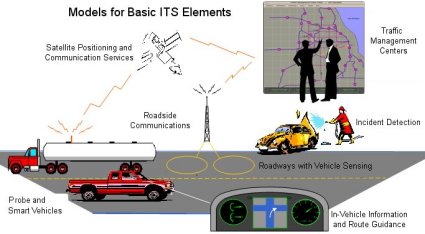Intelligent Transportation Systems
This email address is being protected from spambots. You need JavaScript enabled to view it. - TRACC Director
Background
The development and deployment of Intelligent Transportation Systems (ITS) in the United States is an effort of national importance. Through the use of advanced computing, control, and communication technologies, ITS promises to greatly improve the efficiency and safety of the existing surface transportation system and reduce the transportation-related energy consumption and negative environmental impact. ITS encompass a broad range of wireless and wire line communications-based information and electronics technologies. When integrated into the infrastructure of a transportation system, and in vehicles themselves, these technologies relieve congestion, improve safety, and enhance productivity. ITS is made up of 20 types of technology-based systems. These systems are divided into intelligent infrastructure systems and intelligent vehicle systems.
The Role of High-Performance Computing
Because ITS relies on a very diverse collection of technologies, including communication and control technologies, advanced computing, information management systems, and sensors and instrumentation, high-performance computing can help integrate the multiple ITS components. High-performance computing can also evaluate the ITS impact on the transportation system through detailed simulations that couple the transportation system response with the flow of information between transportation system, transportation agencies, various sensors and traffic management tools, and the travelers.

Intelligent Transportation Systems require the integration of multiple components and state-of-the art computing and communications technologies.